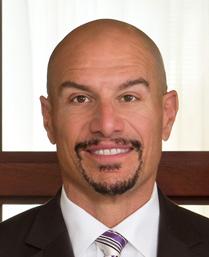
2 minute read
United States
Bradley K. Maples Sr., MRFC® President
Charting Courses and Correcting Course Change
Thanks to Robert Laraia, RFC® who has served on the IARFC Board of Directors and whose company Northstar Wealth Partners has been a corporate sponsor of the IARFC National Financial Plan Competition. We appreciate your service to the Association

Seeking Board Member for the US Chapter
The US Chapter Board will be looking for a qualified individual to step up into a Director position. This is an opportunity to give back to the Association and the financial services industry by volunteering your time and expertise.
The Board meets quarterly (or more frequently if necessary) to carry out the planning for the Chapter, discuss issues that have been presented, and interact with the Board of Trustees.
Those who wish to be considered, can contact the US Chapter Board Liaison, Vicki Caplinger at vicki@iarfc.org.
A plane traveling a great distance can totally miss its intended destination by miles, tens of miles, and even hundreds of miles if it veers even a degree off course. With winds and other factors, this can happen quite easily. A hiker traveling without visual reference points or through uneven terrain can get off course, turned around, or even travel in circles. A boat sailing the seas is acted upon by wind, waves, and currents resulting in changes of direction. Even a boat that is apparently floating in place will drift because of these issues. Minor changes or deviations in course and flight path can cause minor, even major difficulties in reaching destinations. This is why pilots constantly monitor their course, hikers check their bearings and use reference points and a compass, and sailors must constantly adjust their bearings. The more distant the destination, the more critical these course corrections become. Heading across a hill, through a bay, or a flight between two close cities is not as hard, but distance will add to the difficulty of any journey.
These truths hold true in financial planning, advising and consulting. A financial trip through time, market ups and downs, changes in the economy, interest rates, and other risks can alter the effectiveness, and course of our planning. A client’s health, job status, spending, and other factors can affect it as well. A sequence of return problems, at the beginning of retirement, can drastically change the trajectory of a portfolio, no matter how well planned.
So what do we do as planners, advisors, and consultants to take care of these concerns? We need to constantly monitor the plan and make course corrections as needed. Much like pilots adjusting course, hikers changing direction, or sailors adjusting the wheel, we need to make these adjustments. Sometimes, the corrections are small and almost imperceptible. Sometimes greater changes must be made, and sometimes severe modifications will be necessary. These could include a restructure of assets, cutting expenses, changing required contributions, and/or pushing back a retirement. This could be stressful on the planner, advisor, or consultant. It could be even more so for the client, but the consequences could be even more dire if not acted upon with prudence and allowed to become a problem that can’t be solved. Much like a plane, ship, or hiker that doesn’t arrive at its destination, a plan that doesn’t do what it was intended to is a disaster. Checking options and rerunning projections are some of the ways to verify that course corrections are needed.
As planners, advisors, and consultants who care for our clients, and have a responsibility to look out for them, let’s make sure we monitor the path and progress of the plan as well as make or at least suggest course corrections as they become necessary or advisable. In this way, we help them get to their intended destination and hopefully in the time that was allocated.










